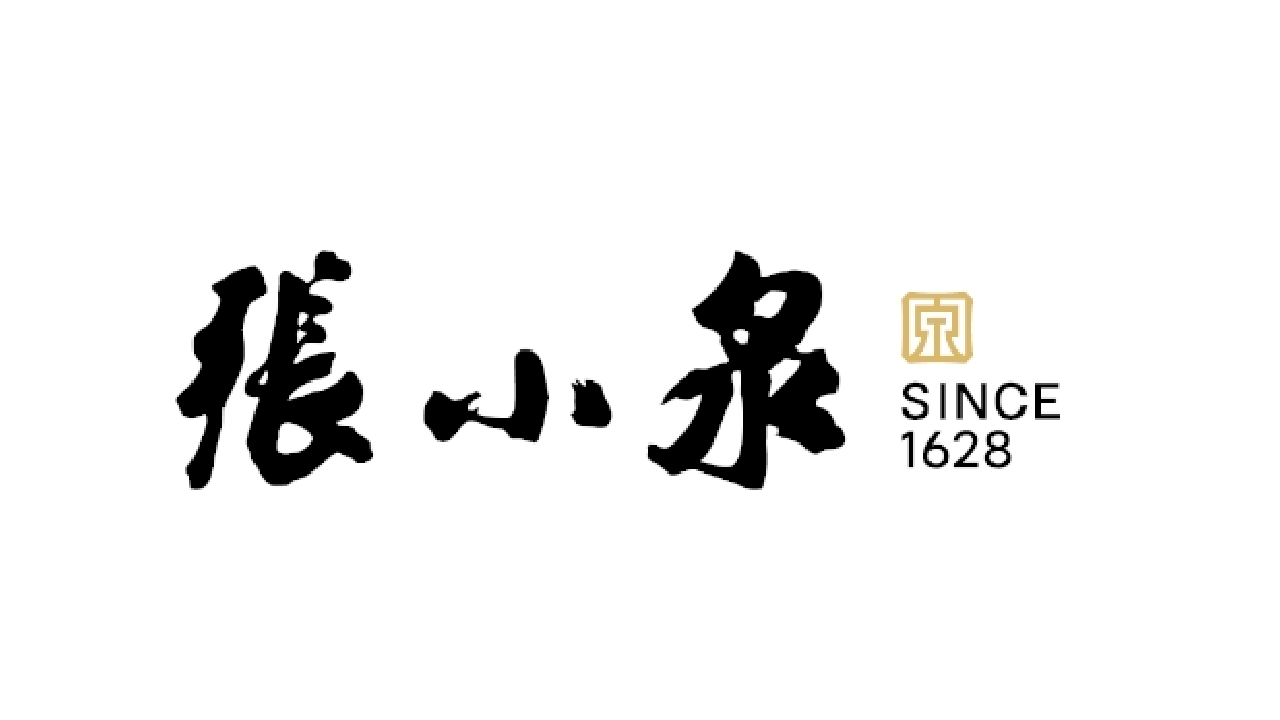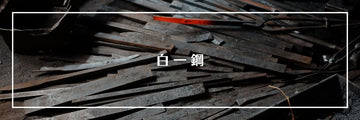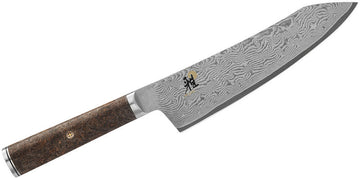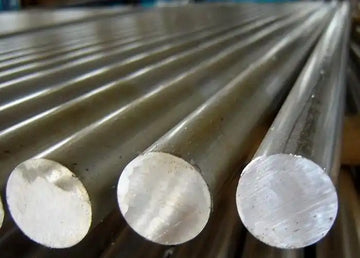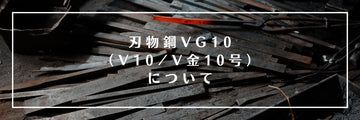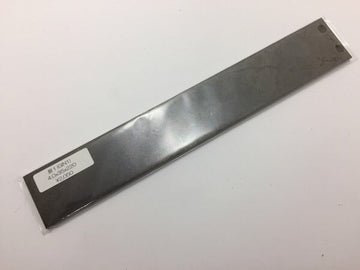White Steel #1 (Shirogami 1) is the purest expression of Japanese knife-making philosophy. Made by Hitachi Metals, this steel contains 1.25-1.35% carbon with almost nothing other alloy elements added, creating blades that achieve a level of sharpness that must be experienced to be believed. While it demands more care than ordinary knives, professional chefs and collectors treasure Shirogami 1 as the gold standard for those who value cutting perfection above all else.
What White Steel 1 Is Made Of
White Steel 1 follows the Japanese tradition of "pure steel," focusing on what matters most:
- Carbon: 1.25-1.35% - The high carbon content allows for extreme hardness (60-64 HRC) and the formation of fine carbides
- Manganese: 0.20-0.30% - Helps the steel harden properly during quenching
- Silicon: 0.10-0.20% - Adds strength to the steel matrix
- Impurities: Virtually none - Phosphorus (≤0.025%) and sulfur (≤0.004%) are kept at minimal levels
Unlike many modern steels, White Steel 1 contains no chromium, tungsten, or vanadium. This purity provides a perfectly uniform martensitic structure with extremely fine grain boundaries. The result is a steel that can take an edge like no other, though this purity also makes it more challenging to forge without creating brittleness.
When bladesmiths heat treat White Steel 1, they typically heat it to 760-800°C, then quench it in water or sometimes oil for more complex blades. After quenching, they temper it at 180-220°C to relieve internal stresses while maintaining that precious hardness. The finished steel achieves a lath martensite structure that allows for incredible sharpness.
How White Steel 1 Performs In The Kitchen Knives
Hardness And Toughness
White Steel 1 achieves exceptional hardness levels of 60-64 HRC on the Rockwell scale, placing it among the hardest kitchen knife steels available. This extreme hardness is what enables its legendary sharpness and edge-holding ability. When properly heat-treated, the fine martensitic structure creates a blade that can be honed to a nearly microscopic edge.
However, this remarkable hardness comes with a trade-off in toughness. White Steel 1 is more brittle than lower-carbon alternatives, making it susceptible to chipping if subjected to lateral forces or twisting. The steel has virtually no flex and will chip rather than bend when stressed beyond its limits. Professional chefs who use White Steel 1 understand these limitations and adjust their cutting technique accordingly, avoiding bone-cutting, frozen foods, or any task that might twist the blade.
The steel's limited toughness is why many high-end White Steel 1 knives feature differential hardening, creating a harder edge (63-64 HRC) with a slightly softer spine (58-60 HRC). This traditional technique, visible as a "hamon" line on honyaki blades, helps balance performance with practical durability. Even with this refinement, White Steel #1 remains a specialist's tool, demanding proper technique and careful use to capitalize on its extraordinary cutting ability.

Sharpness And Edge Retention
A properly sharpened White Steel 1 knife cuts with almost supernatural effectiveness. Sushi chefs prize these knives for their ability to achieve "zero-grind edges" (less than 10° per side), perfect for slicing delicate fish without damaging the cellular structure.
The edge maintains about 90% of its sharpness through processing around 5 kg of vegetables, though professional chefs typically resharpen every 4-6 hours of active use. When it comes time to sharpen, Shirogami 1 responds beautifully to whetstones, requiring about 40% less effort than comparable Blue Steel knives because there are fewer hard carbides to work around.
Reactivity And Care Requirements
Like all carbon steels, White Steel 1 reacts quickly with moisture and acids. Cut a lemon and leave the juice on the blade, and you'll soon find rust spots forming. Over time, the knife develops a protective gray-blue patina that helps reduce (but not eliminate) reactivity.
Caring for White Steel 1 requires diligence:
- Wipe the blade clean immediately after each use
- Hand wash with mild soap and dry completely
- Apply camellia or mineral oil weekly
- Store in a wooden sheath (saya) with silica gel packets to control humidity
- Never, ever put it in a dishwasher
Applications In Kitchen Knives
Traditional Japanese Knife Styles
The most prestigious application of White Steel 1 is in honyaki blades - single-piece construction knives made from just this steel, without lamination. These showcase beautiful temper lines (hamon) and represent the pinnacle of the bladesmith's art, often costing $800-$3,000 or more.
Other traditional forms include:
- Yanagiba/Sujihiki: Long slicing knives (270-300mm) that excel at cutting raw fish for sashimi
- Nakiri/Usuba: Vegetable knives with flat profiles (165-180mm) designed for precise chopping
- Deba: Heavy-duty fish butchery knives (150-210mm) with differential hardening - tougher spines (55 HRC) and harder edges (63 HRC)
About 70% of Michelin-starred sushi restaurants prefer Shirogami 1 for precision tasks like octopus scoring (tako-wari) and sashimi preparation, showing its professional-level appeal.
Comparison With Other Kitchen Knife Steels
White Steel 1 vs. White Steel 2
White Steel 1 contains more carbon (1.25-1.35%) than White Steel 2 (1.05-1.15%), allowing it to achieve slightly higher hardness (60-64 HRC vs. 60-63 HRC). This translates to better edge retention and potentially sharper edges but at the cost of increased brittleness. Many chefs find Shirogami 2 offers a better practical balance for daily use, while Shirogami 1 represents the ultimate refinement for those with the skill to use it properly.
White Steel 1 vs. White Steel 3
White Steel 1 contains significantly more carbon (1.25-1.35%) than White Steel 3 (0.80-0.90%), resulting in a substantial difference in hardness (60-64 HRC vs. 56-59 HRC). This translates to about 45% better edge retention for White Steel 1 but at a considerable cost to toughness. White Steel 3's lower carbon content creates a microstructure with more ferrite, making it approximately 40% more resistant to chipping and much more forgiving of lateral stress. Professional chefs often recommend Shirogami 3 for beginners developing their technique, while White Steel 1 represents the opposite end—demanding perfect technique but rewarding it with superior cutting performance.
White Steel 1 vs. Blue Steel 1(Aogami 1)
Both steels contain high carbon (White Steel 1: 1.25-1.35%, Aogami 1: 1.30-1.40%), but Blue Steel 1 adds chromium, tungsten, and molybdenum. These additions give Aogami 1 better wear resistance, but Shirogami 1 can achieve a finer edge due to its purer composition. Aogami 1 is also more difficult to sharpen because of its complex carbides, while Shirogami 1 responds more readily to whetstones.
White Steel 1 vs. VG-10
White Steel 1 (1.25-1.35% carbon) focuses on purity, while VG-10 (1% carbon, 15% chromium, plus cobalt, molybdenum, and vanadium) emphasizes versatility and corrosion resistance. VG-10 is substantially easier to maintain and much more resistant to rust, but Shirogami 1 offers superior edge refinement and easier sharpening. Choose VG-10 for convenience, and White Steel 1 for ultimate cutting performance if you can manage its care requirements.
Taking Care Of Shirogami 1 Knives
Basic Maintenance
Caring for Shirogami 1 requires more attention than stainless steel knives, but many chefs find the ritual becomes second nature:
- Clean the blade immediately after use, especially after cutting acidic foods
- Wash by hand with pH-neutral soap and avoid abrasive pads
- Dry thoroughly with a Japanese tenugui (absorbent cloth) or similar
- Store in a wooden saya (sheath) with silica gel to control humidity
- Apply tsubaki (camellia) oil weekly to prevent oxidation
Sharpening Recommendations
One of the joys of owning a White Steel #1 knife is how wonderfully it responds to sharpening:
- Start with medium grit stones (1000-2000)
- Progress to fine stones (3000-6000) for refinement
- The steel provides clear feedback during sharpening, making it easier to maintain the proper angle
- A light strop on leather can further refine the edge
Even with its superior hardness, Shirogami 1 is actually easier to sharpen than many alloy steels because of its simple, pure composition.
Challenges And Modern Innovations
The demanding nature of Shirogami 1 presents challenges in both making and using these knives. Only about 8% of Japanese bladesmiths under 50 specialize in working with this steel due to its unforgiving nature during forging and heat treatment.
To make this exceptional steel more practical for everyday use, some makers create san-mai (three-layer) construction knives with a Shirogami 1 core clad in stainless steel. This provides the cutting performance of White Steel #1 with improved maintenance characteristics.
Conclusion
White Steel #1 represents the pinnacle of traditional Japanese knife-making philosophy. Its high carbon content (1.25-1.35%) and minimal alloying elements create a steel capable of achieving sharpness that transforms the cutting experience.
For professionals and serious enthusiasts willing to embrace its care requirements, Shirogami 1 offers unmatched performance for precision tasks like radish peeling (katsura-muki) and fish scoring (sujime). Beyond mere functionality, these knives connect users to centuries of Japanese culinary tradition, where the pursuit of perfection is valued above convenience.
Like a master calligrapher's brush or concert violinist's instrument, a White Steel #1 knife demands respect and care, but returns the investment with performance that elevates cooking from mere food preparation to a form of precise artistry.
FAQs
What is white steel #1?
White Steel #1 (Shirogami 1) is a high-carbon Japanese knife steel made by Hitachi with 1.25-1.35% carbon content. It contains minimal alloying elements, offering exceptional sharpness with 60-64 HRC hardness but requires careful maintenance.
Does white steel rust easily?
Yes, White Steel rusts easily. It has no chromium for corrosion resistance and requires immediate cleaning and drying after use, especially after contact with acidic foods.
Is white steel good for knives?
White Steel is excellent for kitchen knives, especially for precision cutting tasks. It takes an exceptionally sharp edge and sharpens easily, though it requires diligent maintenance to prevent rust.
What is the difference between white steel #1 and White steel 2?
White Steel #1 has higher carbon content (1.25-1.35%) than White Steel #2 (1.05-1.15%), making it slightly harder (60-64 HRC vs. 60-63 HRC) with better edge retention but increased brittleness. White Steel #2 offers better toughness and is less prone to chipping.
How to take care of white steel 1?
Clean immediately after use with mild soap, dry completely, apply camellia oil weekly, store in a dry place, preferably in a wooden sheath. Never leave wet, never put in dishwasher, and wipe during use when cutting acidic foods.
Is blue steel or white steel better?
Neither is universally better. Blue Steel offers better edge retention and slightly improved corrosion resistance due to added chromium and tungsten. White Steel is easier to sharpen and can achieve a keener edge. Choose based on your priorities.
White steel vs stainless steel
White Steel offers superior sharpness and easier sharpening but rusts easily and requires constant maintenance. Stainless steel provides excellent corrosion resistance and lower maintenance but can't match White Steel's ultimate sharpness or ease of sharpening.
White steel vs vg10
White Steel achieves a sharper edge and is much easier to sharpen, while VG10 offers dramatically better corrosion resistance (900% better) and better edge retention (20-25% longer). Choose White Steel for performance, and VG10 for practicality.
White steel 1 vs blue steel 2
White Steel #1 has slightly higher carbon (1.25-1.35%) than Blue Steel #2 (1.05-1.15% plus chromium, tungsten). White Steel #1 can take a keener edge and sharpens more easily, while Blue Steel #2 offers approximately 30% better edge retention and slightly improved corrosion resistance.
Blue steel vs white steel knives
Blue Steel knives maintain their edge longer and have marginally better corrosion resistance due to added alloying elements. White Steel knives can achieve a sharper edge and are easier to sharpen. Blue Steel is better for heavy-duty work, and White Steel for precision tasks.
